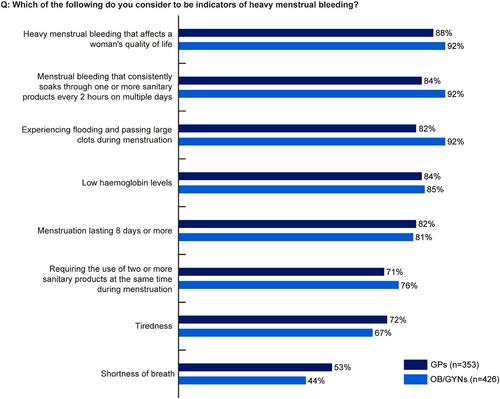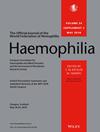Driving improvement of diagnosis and awareness of heavy menstrual bleeding in women among physicians
Abstract
Introduction
A number of barriers in care exist for women/girls with bleeding disorders. Little progress has been made to overcome them, particularly regarding levels of awareness of healthcare professionals (HCPs) and women/girls.
Aim
To evaluate awareness and perception of heavy menstrual bleeding (HMB) and bleeding disorders among HCPs and women/girls.
Methods
A three-part qualitative study was conducted, including HCPs and women/girls from over seven countries. Part 1 included eleven 60-min interviews with experts discussing HMB diagnostic barriers, which were further assessed in surveys among 6099 women/girls, 353 general practitioners (GPs), and 426 obstetricians and gynaecologists (OB/GYNs) during Part 2. Part 3 included three 1.5–2-h workshops with 20 clinicians and patient representatives covering HMB knowledge, criteria defining HMB and HCP resourcing for diagnosis.
Results
Many HCPs do not conduct certain investigations for women/girls presenting with HMB, and 22% of GPs lack confidence in the management of HMB. Only 8% of GPs use screening tools to evaluate menstrual blood loss, and 13% of GPs and 15% of OB/GYNs assess underlying bleeding disorders. Seventy-six percent of menstruating women/girls believed they could recognise HMB symptoms ‘well’. However, 23% of these women/girls would not seek medical advice for abnormal/prolonged menstruation disrupting their lives. Disruptions were reported in 34% of women/girls from the general population and 61% of women with at-risk symptoms of HMB.
Conclusion
Many women/girls and HCPs have limited awareness of important HMB indicators. There is a need for standardized clinical criteria to promote efficient diagnoses and management.


 求助内容:
求助内容: 应助结果提醒方式:
应助结果提醒方式:


